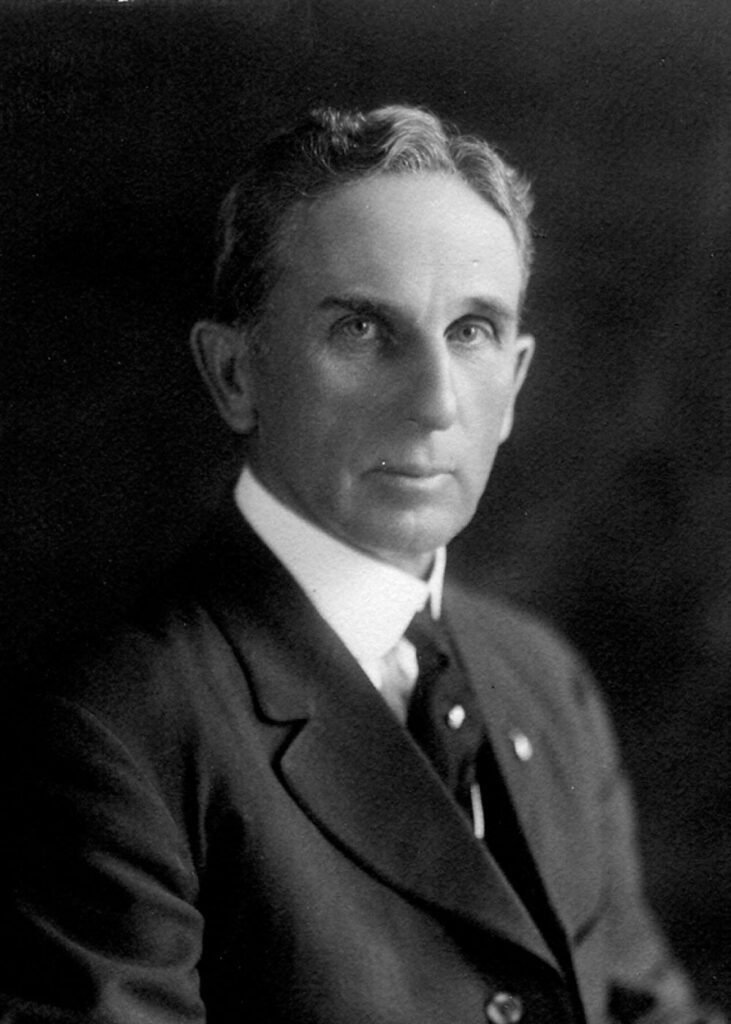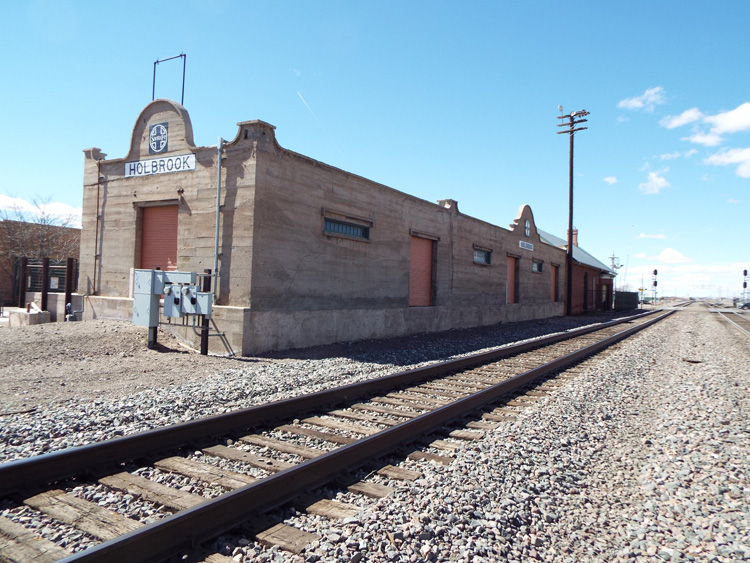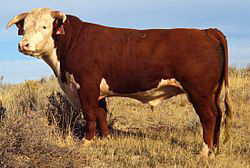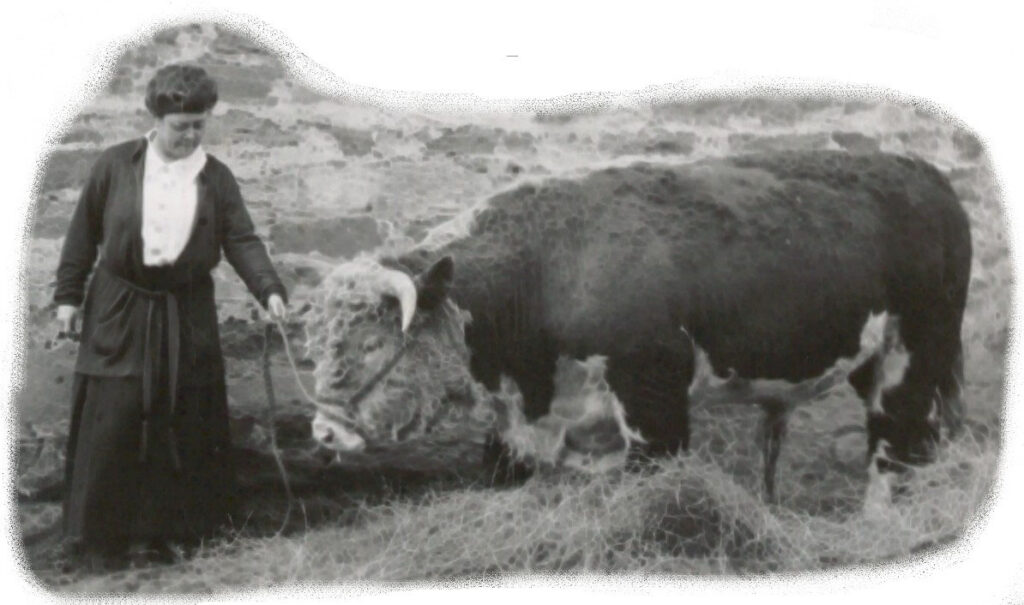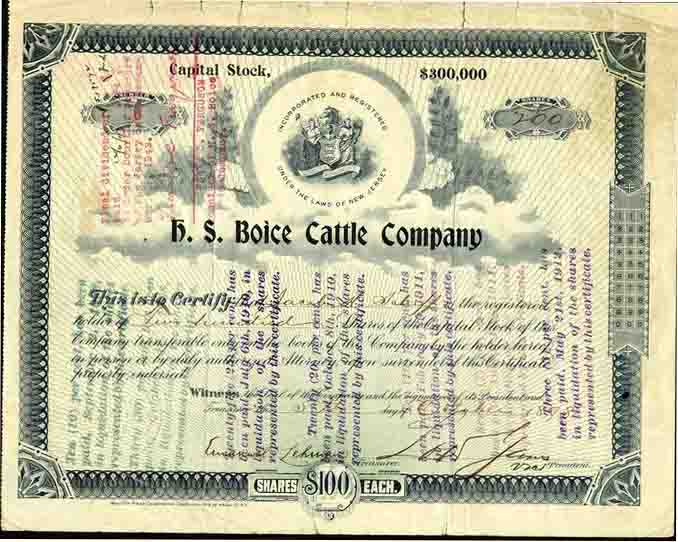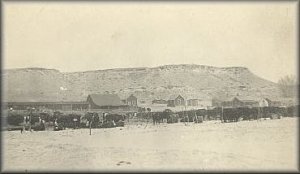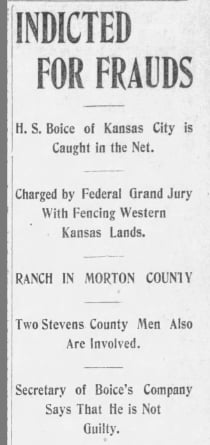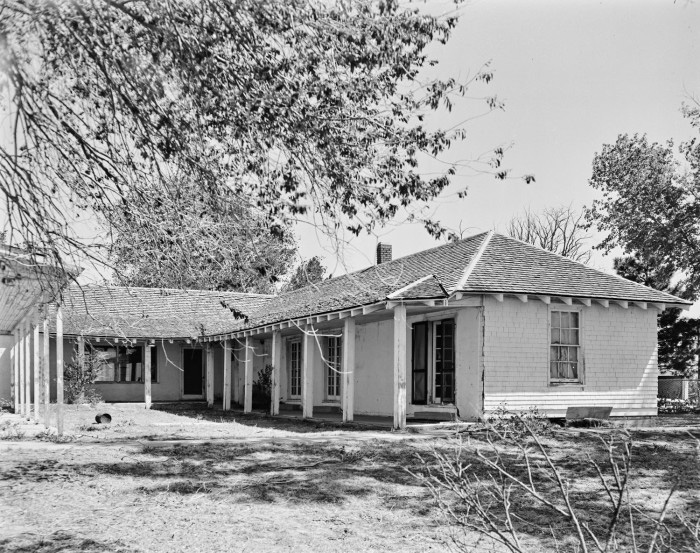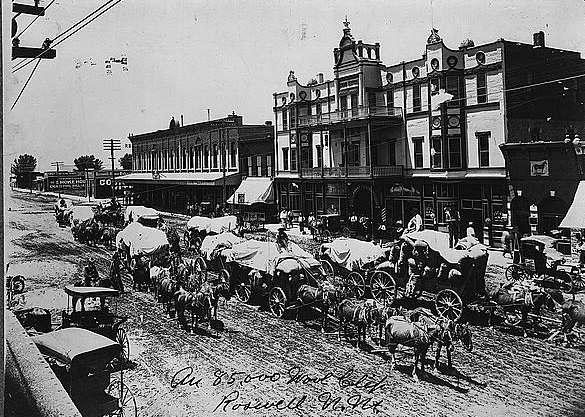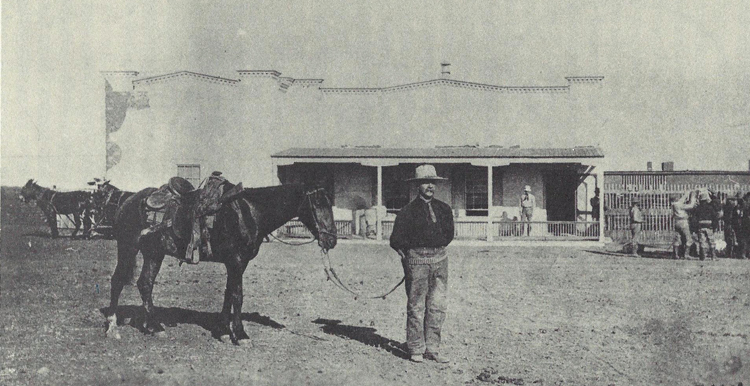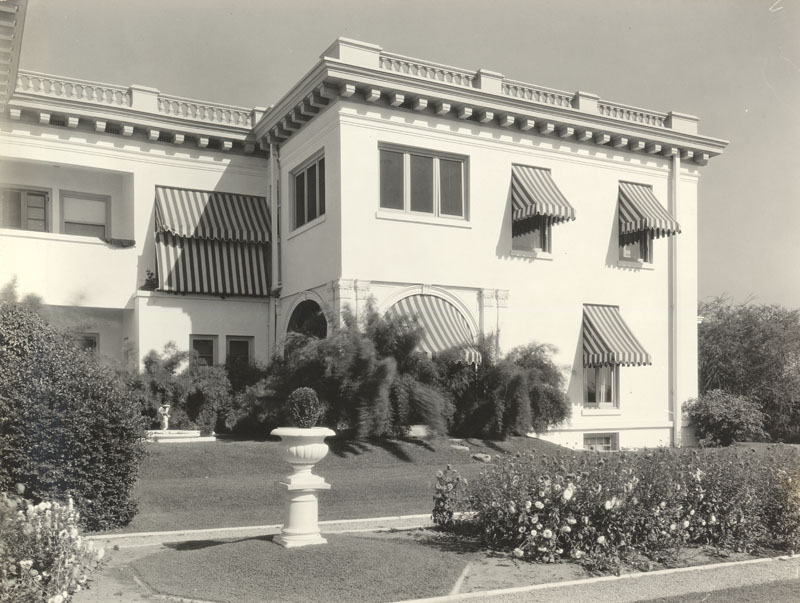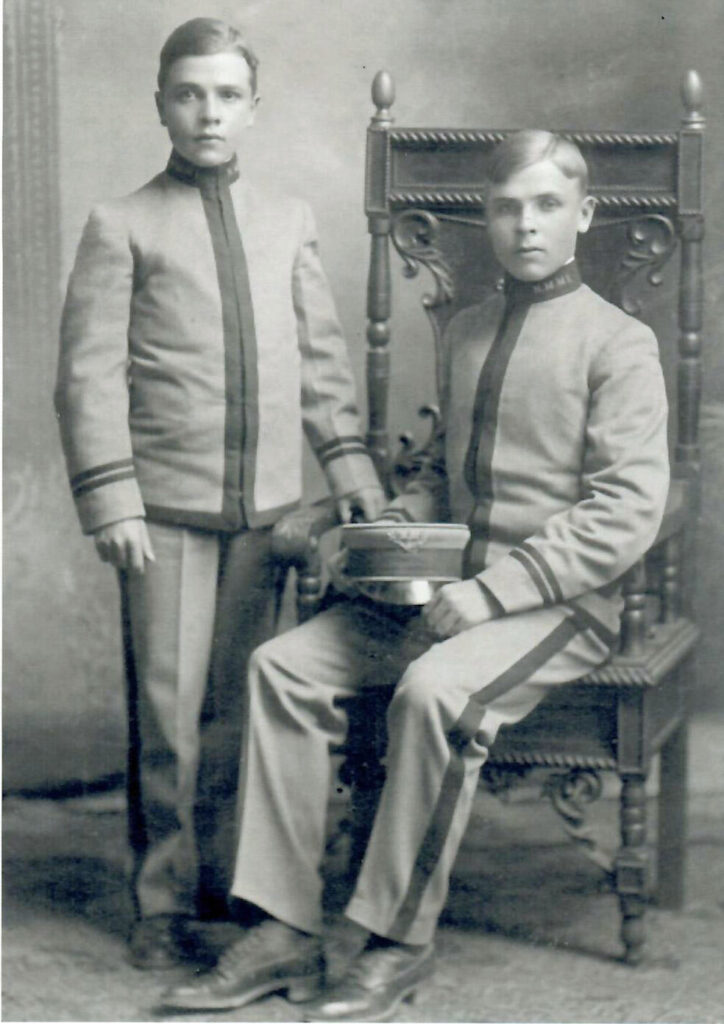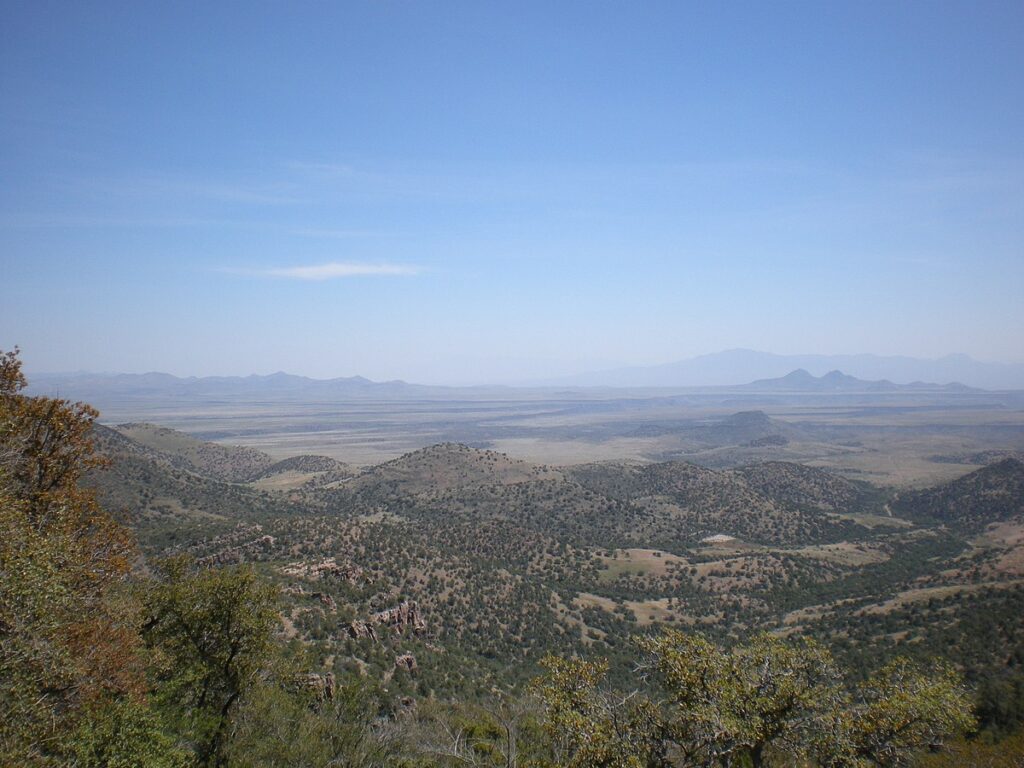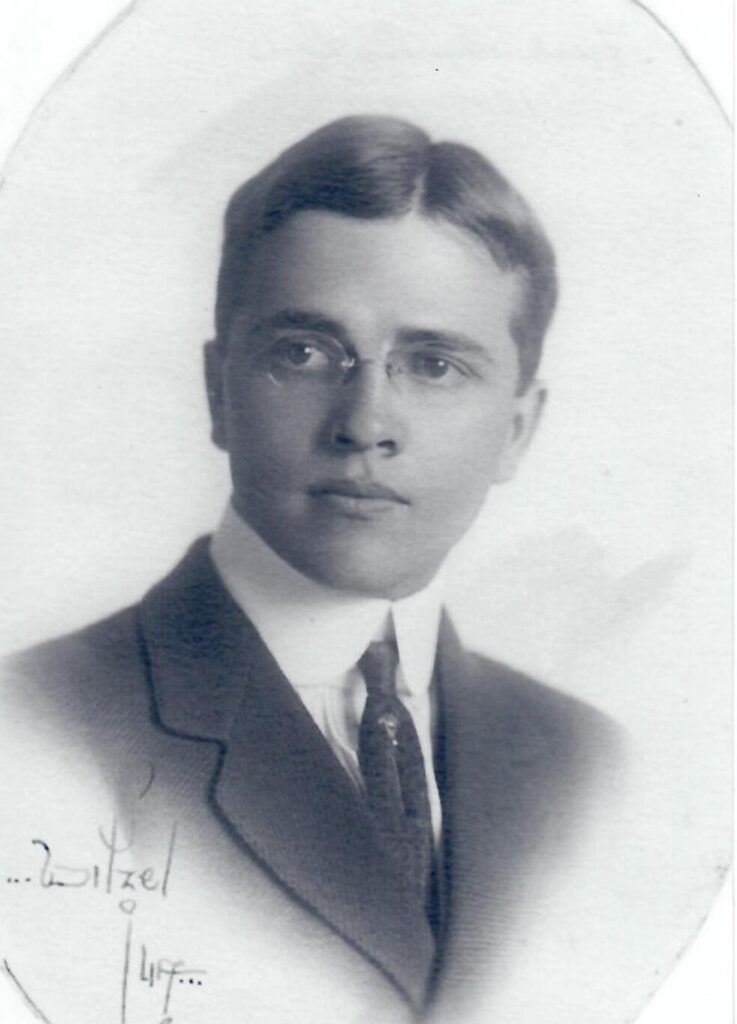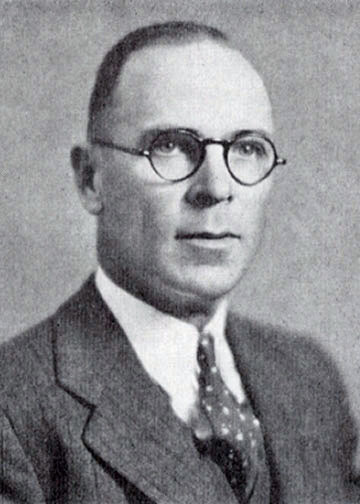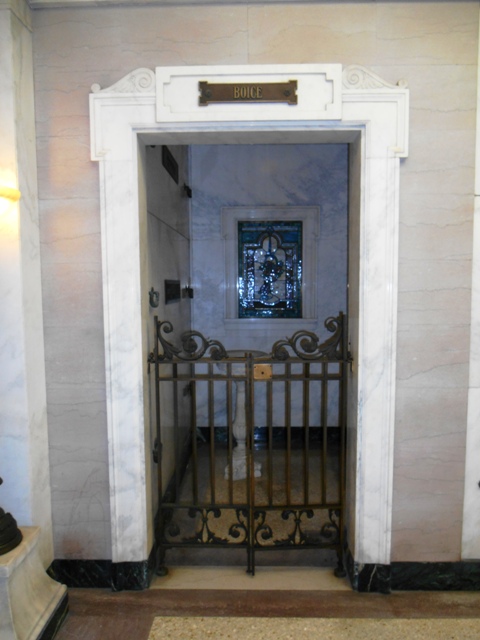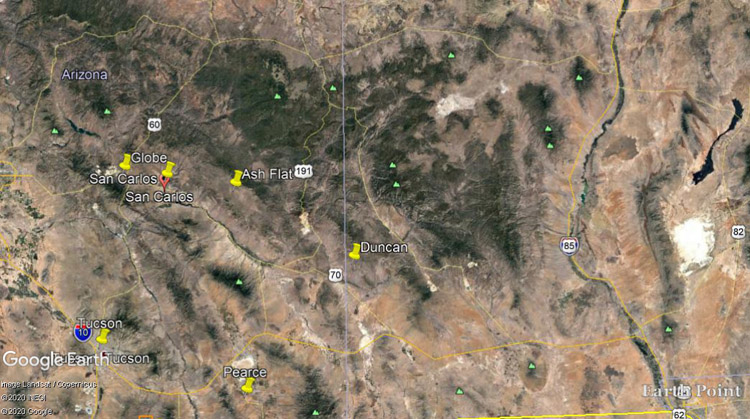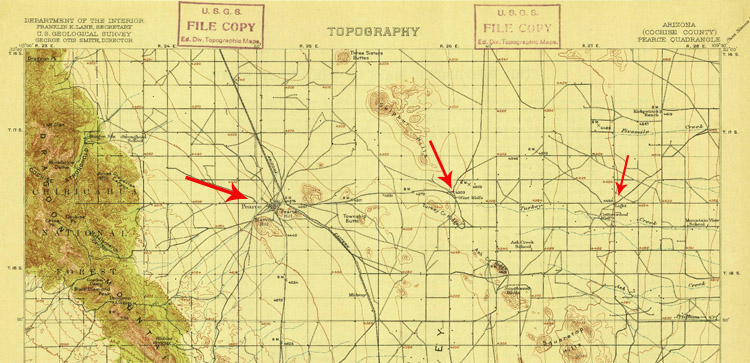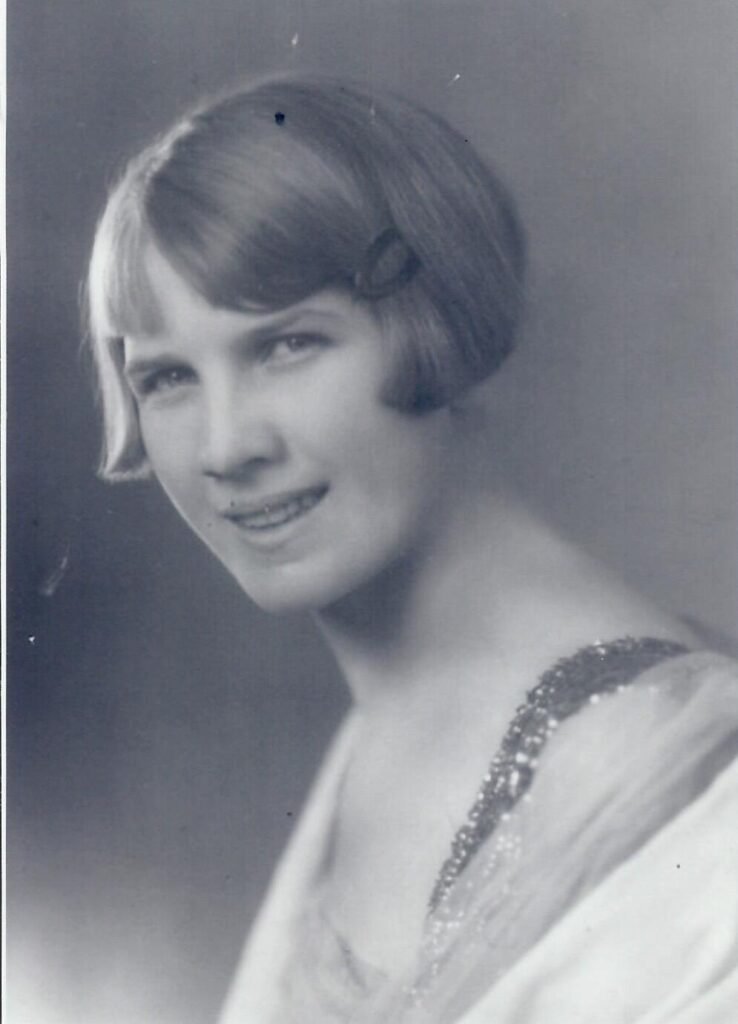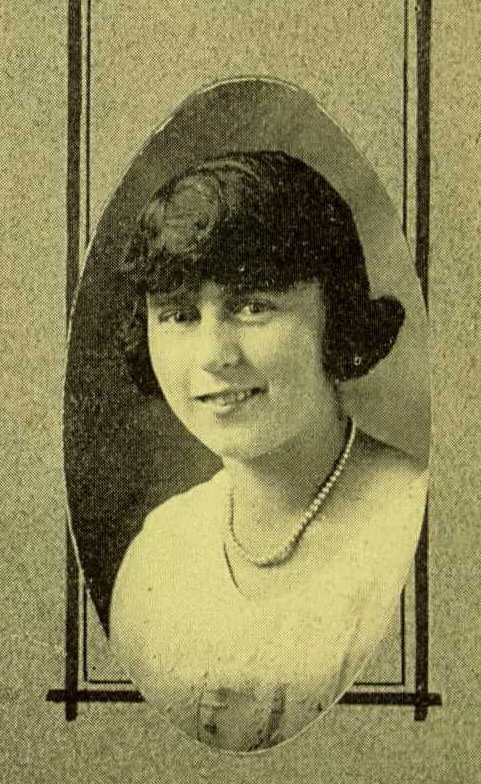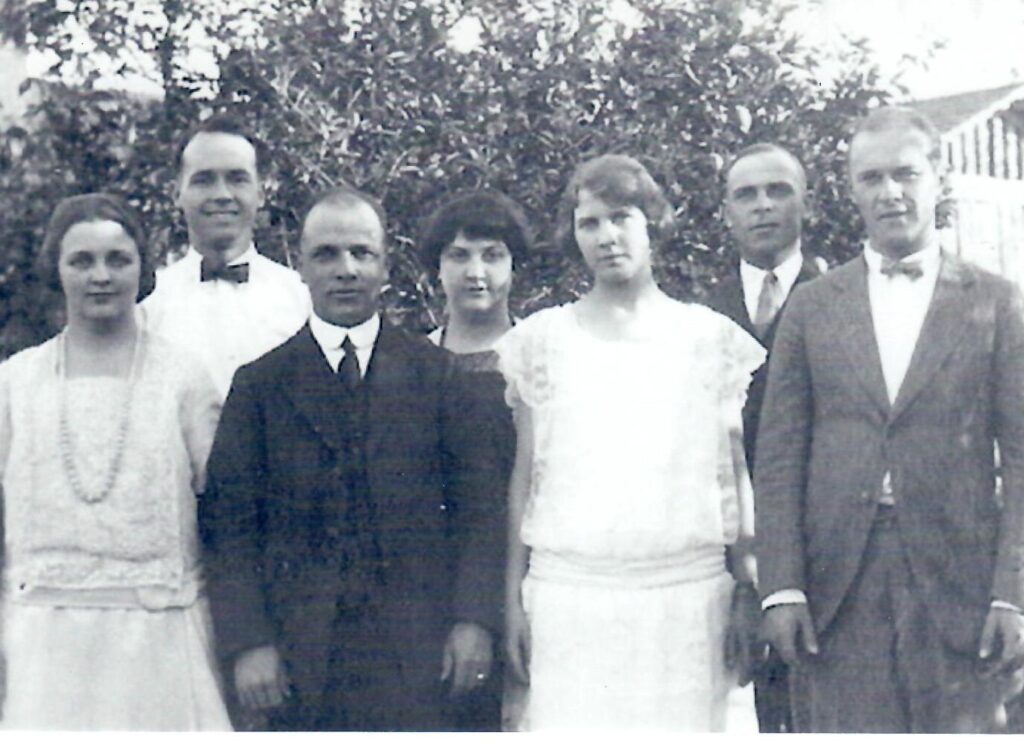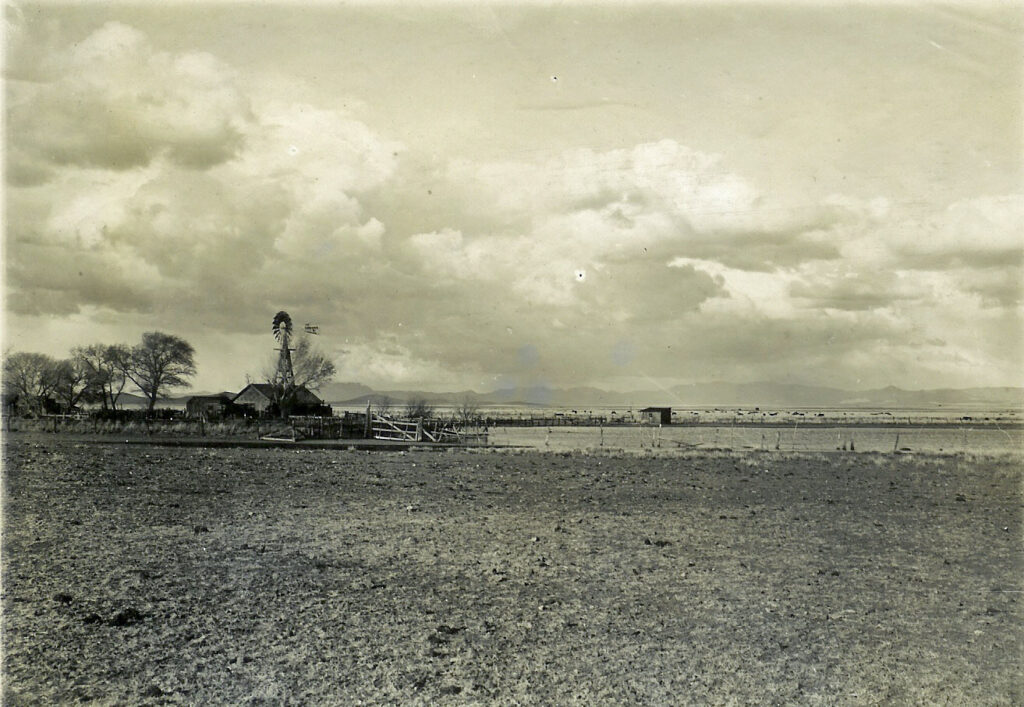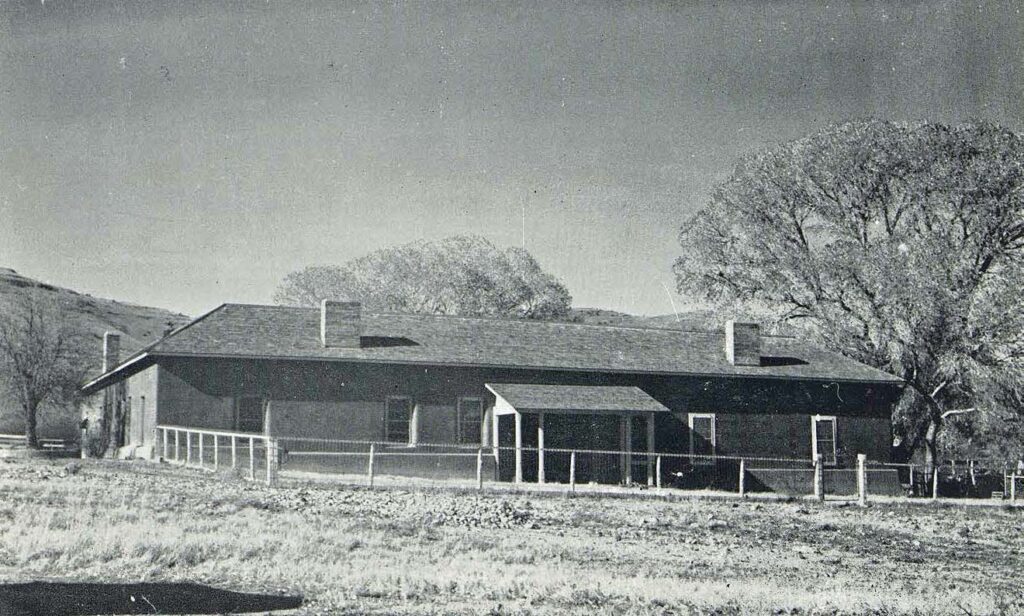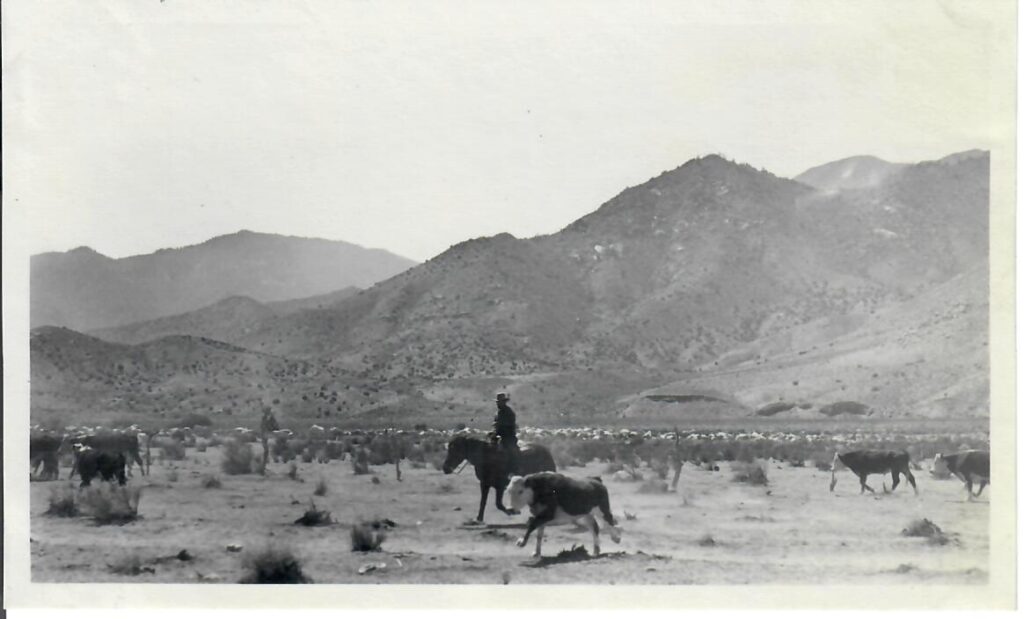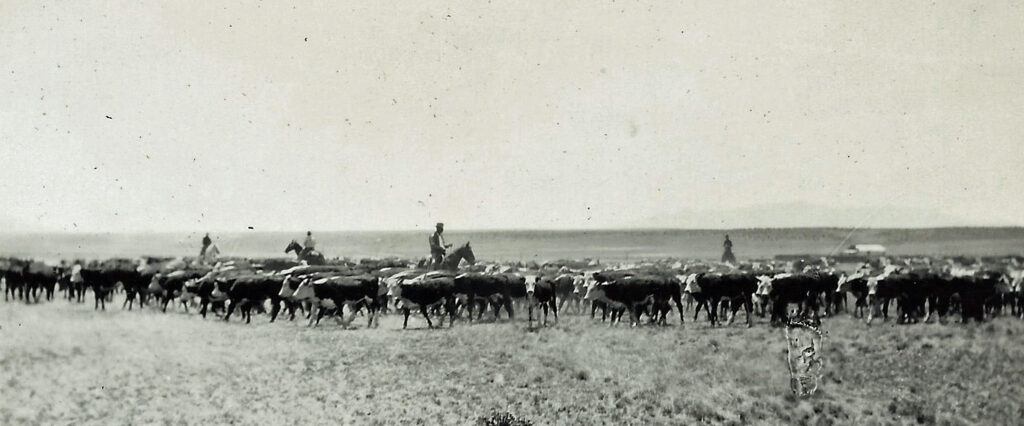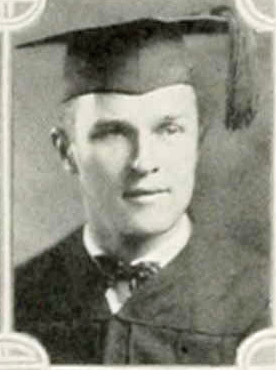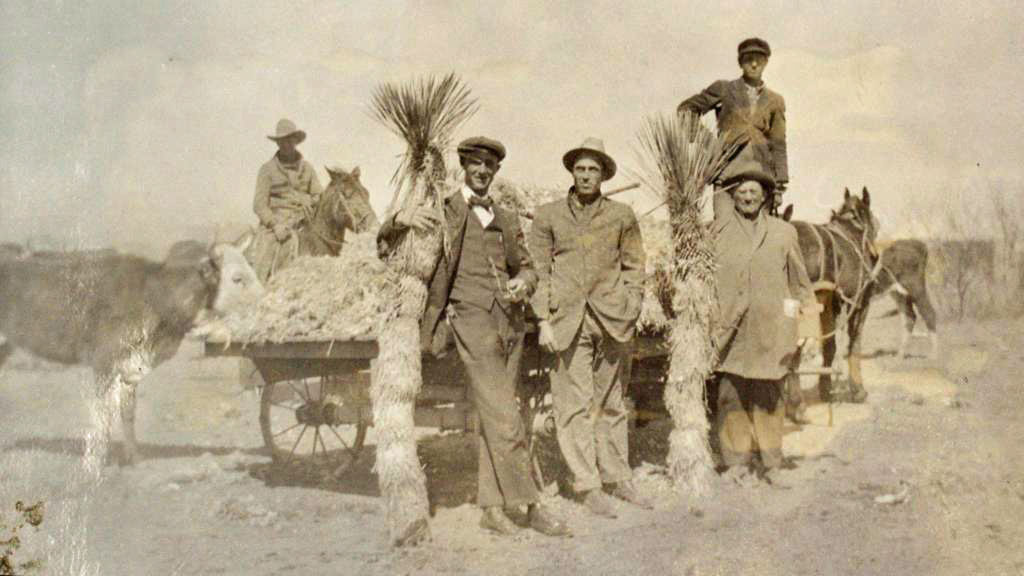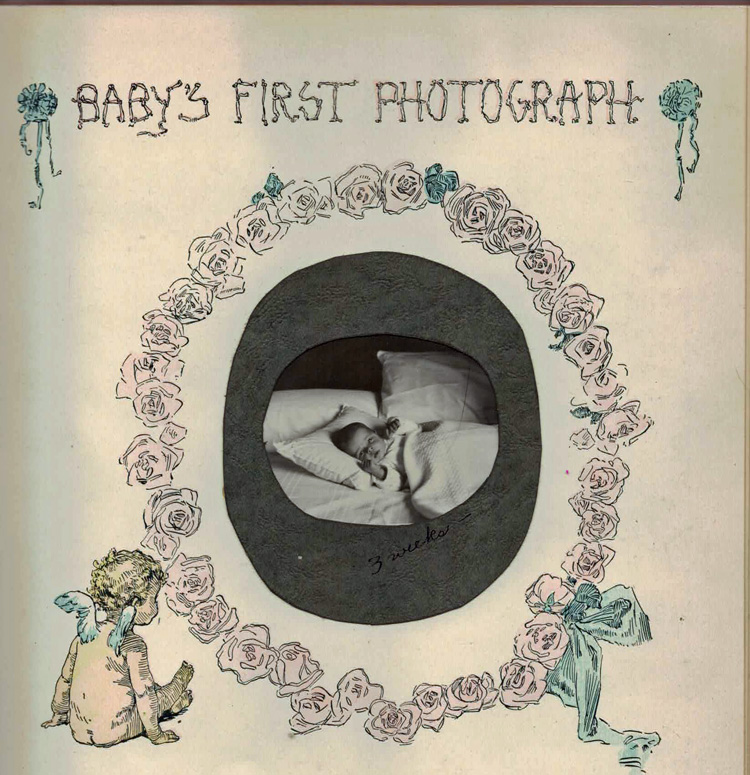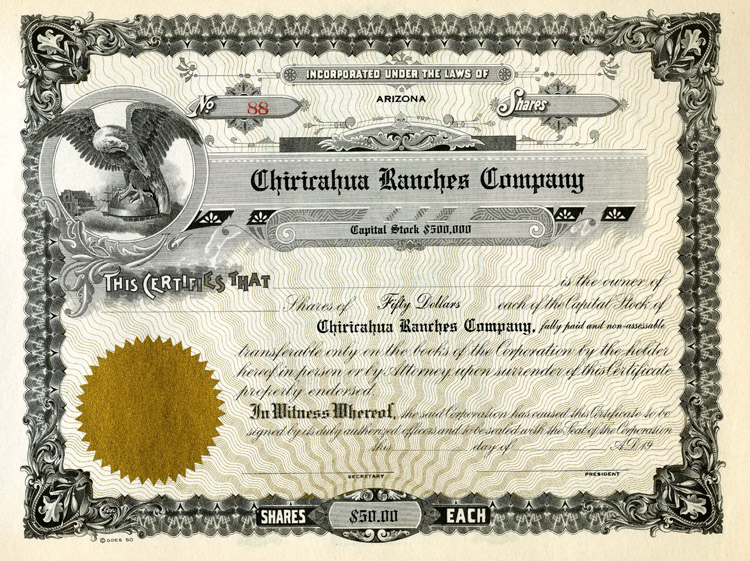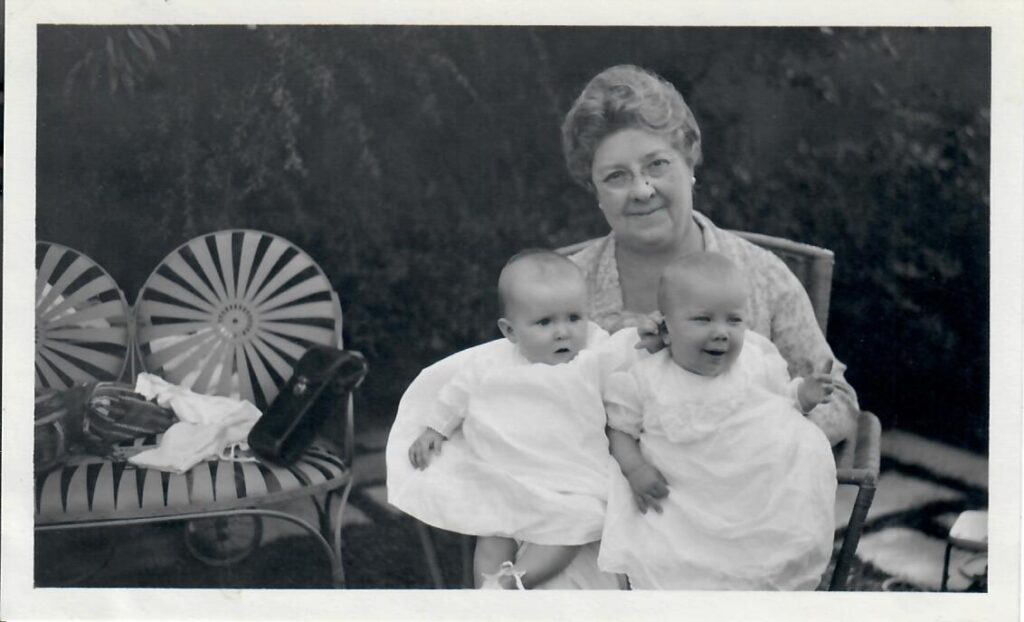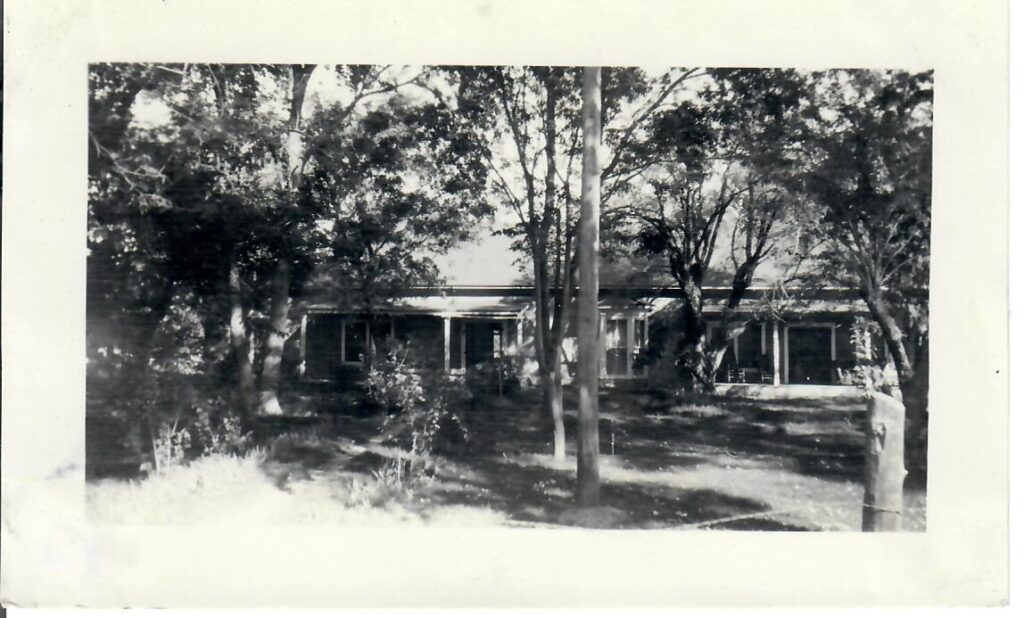Boice Family Ranching History, 1859-1928
Introducing Henry Stephen Boice
The Boice family ranching legacy begins in New Mexico in 1859 with the birth of Henry Stephen Boice. His father, Stephen Boice, was a physician. “Young Boice started regular cowboying when he was 15 years old – at $15 a month.” He worked for the Creswell Young ranch, becoming its foreman at age 18. In 1881 Henry partnered with Dave Berry to run the 777 outfit in eastern Montana near the North Dakota border. Theodore Roosevelt’s ranch bordered the 777, and Henry S. came to know Roosevelt.
“The 777 was a steer operation. Henry would contract for steers throughout the Southwest, as many as 25,000 of them a year! On one occasion, early in their business association, Henry Boice bought a big bunch of Texas cattle and trail herded them to North Dakota. Berry-Boice operated on this scale for 12 years…” [Richard Schaus, Hereford Tradition of Arizona’s Boices, 1959].
A Legendary Cattle Buyer
Will C. Barnes shared the following story about Henry S. Boice’s cattle buying expertise. “In February 1891 a stranger dropped off a west-bound Santa Fe train in the little town of Holbrook in Arizona. He was a quiet, gentlemanly chap, dressed in decidedly ‘dude’ clothes for those days. A soft felt hat…most immaculate linen, Oxfords, colored socks marked him at once as a stranger in a strange land.” After a night’s rest Henry S. told the local barkeeper that he was interested in purchasing two-year-old steers. “…delivery in May and June, stuff to be full aged, of any color, cripples, runts, swaybacks, and big jaws to be cut out.” The local ranchers soon learned that Henry S. Boice was interested in buying 20,000 head at $12 apiece, and instantly signed up.
Henry S. returned and “on the date of the first delivery he was on hand ready to receive the steers. Banking on his general tenderfoot exterior, we had all agreed that he was a bird to be plucked. What could such a man know of the steers and their ages? We had 2,500 all rounded up. Now if there was one yearling in the group there were 500. ‘He would not know the difference’ we all agreed.”
Henry rode through the herd and then “Quietly he rode up to the group of ‘four-flushers’ who had outrageously stacked the cards on him. When you get three or four hundred yearlings, and about forty cripples, big jaws, stags, and runts out of that bunch, send me word up town and I’ll come down and look at them over. Also read your contracts over before you do it.’” [The Breeder’s Gazette, 2/12/1920] Needless to say the Holbrook ranchers’ subsequent deliveries met the contracts’ terms.
Pure Bred Herefords
Henry “Boice was among the first to buy purebred bulls and breed up his stock. The Kansas firm of Gudgell and Simpson, established in 1879 to import bulls for breeders, sold him several prize bulls, especially Herefords. Boice went to Independence, Missouri, to do business with Charles Gudgell, and met Gudgell’s daughter LuBelle.” [Handbook of Texas]
Charles Gudgell and his partner, T.A. Simpson, had begun breeding Hereford cattle using bulls and cows imported from Canada and England between 1876 and 1882.
Henry S. Boice marries LuBelle Gudgell - 1892
On March 23, 1892 Henry Boice married LuBelle Gudgell in Independence, MO. LuBelle was born in 1871 in Independence. An article about the “belles of Missouri” noted: “Lou Belle Gudgell Is a member of the elite, and one whose beauty and genius entitle her to the kindest treatment at the writer’s hands. Her father Is Charles Gudgell, Esq., fine cattle broker. Miss Gudgell has great histrionic ability and possesses in her graces of manner all the elements of popularity.” [St. Louis Post-Dispatch, 4/21/1889]
The couple settled in Independence after their marriage, and moved to Kansas City, MO by 1897.
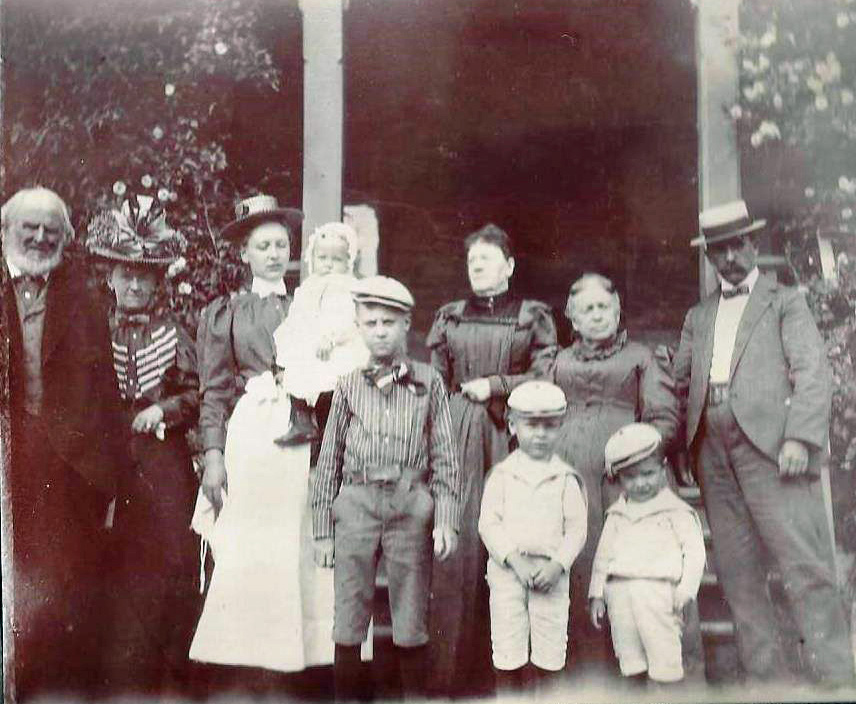
Henry and LuBelle Boice Children
Henry and LuBelle had five children, all born in Missouri. The eldest, Henry Gudgell Boice, was born on February 26, 1893. Frank Seymour Boice was born on August 19, 1894. LuBelle Boice was born on March 11, 1897, Helen Boice was born on July 25, 1900, and Charles Gudgell Boice was born on April 1, 1902.
H.S. Boice Company - 1897
In 1897 the Boice-Berry Company ceased operations and Henry Boice established the H.S. Boice Cattle Company. In 1898 he purchased the Point of Rock Ranch from the Beatty Brothers. The ranch was located along the Cimarron River in Kansas and Oklahoma. [Topeka State Journal, 3/1/1898]. The Boice family home remained in Kansas City but they spent summers at Point of Rock. Henry Jr. and Frank Boice began to learn cowboying skills at the early age of 6 1/2 and 5 respectively.
Point of Rock Ranch - 1897
A newspaper article described the Point of Rock ranching operation. “The Boice Cattle company recently marketed a whole train load of cows at Kansas City. The company is the owners of one of the largest ranches in the Southwest at Point Rock Kansas. This ranch covers a portion of Morton county, Kan., extends Into Beaver county, Okla., and also includes a large strip of land in Colorado. The run of cattle on the ranch this year numbers over 20,000 head and this was the first shipment made. The ranch is well equipped with modern improvements, such as windmills and water tanks on all parts of the immense track of land, which is all under fence. There are also erected on the ranch sheds and other storm protectors. [The Geuda Springs Herald, 9/25/1903]. The ranch was sold in 1907 to Santa Fe Land Improvement Company, a subsidiary of the Santa Fe Railroad.
Boice Cattle Company Indicted for Illegal Fencing - 1905
In the early 1900s ranchers were adversely affected by increased homesteading activity and some began to install fences on the public lands they used for grazing. In 1905 the federal government decided to act on complaints about this illegal activity. “Henry S. Boice of Kansas City, president of the H. S. Boice Cattle Company, and ail the officers of that company, as well as the company itself, have been indicted by the federal grand jury for illegally fencing in government lands in Morton county, Kan.“ [The Hutchinson News, 12/7/1905]. Several other cattlemen were also indicted.
The case went to court in 1906 and an initial settlement was reached: “If the western Kansas ranchmen who are charged with maintaining fences around government land will remove the fences within sixty days from this time the cases against them will be dismissed.” [The Kansas Weekly Capital, 4/27/1906] The Boice Company did not meet the sixty day deadline and a fine of $1,250 was imposed. The fences were removed by the end of the year.
XIT Ranch -1905-1912
In 1905 Henry Boice became the manager of the famed XIT Ranch in Channing, TX, and the Boice family left Kansas City for Channing. The XIT was established in 1879 when the Texas Legislature appropriated three million acres of land to finance a new state Capitol building. The land was to be sold over time to finance the Capitol building and the ranch was established to use the land until it was sold.
In 1905, when Henry Boice became the manager, the land holdings were being sold in smaller plots to farmers. Boice managed the ranch until the last of its cattle were sold in 1912. During his tenure he worked to develop a pure-bred Hereford herd using Gudgell & Simpson stock. Henry was described as “…a unique character in the rough and ready life of the cattle range. He did not smoke, drink or indulge in profanity. He was a man of force and his orders were carried out with dispatch.” [J. Evetts Haley, The XIT Ranch of Texas, 2013]
Block Ranch - 1908
In 1908 Henry Boice organized a syndicate to purchase the Block Ranch in New Mexico. In June of that year, while loading cattle from the Block Ranch at Roswell, H.S. had a brush with death.
“Boice, according to the report was overseeing the loading of some of the Block ranch cattle which he had recently purchased. Along with the men who were working the cattle at the yard he noticed an outsider, intoxicated to a state of reckless dare-deviltry, who was riding one of the Block horses, and who persisted In abusing the horse and Interfering with the work. Mr. Boice approached the man, asked him his business and when he found that the fellow bad simply taken possession of a horse, peremptorily ordered him to get off the horse, and get out of the way. The man resented this and after a few words had passed between them, he swung off his horse and struck down Mr. Boice with a knife. The knife entered Mr. Boice’s right side and made big wound in his chest. Mr. Bolce was, as soon as possible, given every attention, but the wound is recognized as an extremely critical one.” [The Weekly Herald, Amarillo, Texas, 6/26/1908]
Chiricahua Cattle Company (CCC) - 1908
By 1908 Henry Boice was also managing of the Chiricahua Cattle Company (CCC) which established in the 1870s in the Sulphur Springs Valley of SE Arizona. The CCC had been sold to a group of Texas investors in 1909 by J.V. Vickers and his partners. Henry Boice persuaded the controlling partners to purchase 400 of the XIT purebred Hereford herd to stock the CCC.
In its heyday the CCC controlled over 1.6 million acres of grazing land. By the time Henry Boice undertook its management homesteaders were farming in the Sulphur Springs Valley so the CCC shifted its grazing operations to permitted land on the San Carlos and Fort Apache Indian reservations. [Richard Schaus, Hereford Tradition of Arizona’s Boices, 1959]
A Home in Pasadena, CA - 1910
By 1910 the Henry Boice family’s residence was in Pasadena, CA. The children’s education required that they live in a city during the school year. In 1914 a family home was built: “Henry Boice, a former cattle grower in this section is erecting a $100,000 home in Pasadena and has an office in Los Angeles.” [The Dickinson Press, 5/10/1913] Henry Boice called the home “Fernbrook.”
Henry G. and Frank Boice’s Education
Henry G. and Frank Boice attended the New Mexico Military Institute in Roswell, NM for a year, and completed high school at Occidental Academy in Los Angeles, graduating with honors in 1911. [Richard Schaus, Hereford Tradition of Arizona’s Boices, 1959]
Henry and Frank both majored in history-economics at Occidental College. Frank graduated in 1915 and Henry in 1916.
Summer on the Range - 1912
Henry G. recollected: “One spring I remember when school was out Father brought us three boys to the ranch to work. Frank was 17, Charley was 10 and I was 19. Father said we’d be there until school time in September. Before he ·left, I overheard a conversation between him and Fred – who had come to buy some cattle. He said to Father, ‘Henry, aren’t you afraid to leave these boys out here in this big open country by themselves all summer? Something might happen to them.’ And Father replied, ‘Yes, Fred, I am somewhat afraid, but it is the only way I know to make men out of them.’”
“And we got along all right. The worst thing that happened was when Frank broke his hand and had to ride 40 miles to get it put in a cast. On his way back he intended to stay with one of the Indian Agents, at his camp overnight but when he got there the man was gone and left no grub cooked; so Frank had to cook his supper – with one hand. He even had to make bread and he told me about it afterwards; said his whole left hand got covered with dough and with his right hand in the cast, he couldn’t use it so he had a time getting the dough off, but he managed some way and showed up where we were the next evening. That was the only casualty I can remember happening that summer.” [Cowpunching (NOT) Deluxe! By Abbie Keith, Arizona Cattlelog, May, 1963]
Frank Boice to Boston - 1916
Frank Boice attended the Massachusetts Institute of Technology, Class of 1917, receiving degrees in mechanical and electrical engineering. He was at MIT when the U.S. entered World War I and he worked at Western Electric Laboratories where he developed a submarine detector.
Boice, Gates and Johnson Incorporated - 1917
The name of the Chiricahua Cattle Co. had been changed to Boice, Gates & Johnson in 1908, but the company was not officially incorporated, in California, until 1917. The primary stockholders were Henry S. Boice, Carroll W. Gates, Henry Levinson. Egbert J. Gates, and W. D. Johnson.
In 1912 John Goodall, superintendent of livestock for the government described the operation: “On the [San Carlos] reservation he found the Boice, Gates & Johnson Co. with 20,000 cattle and 4,000 head on the White Mt. district. Henry Boice, head of the firm, formerly operated extensively in Billings county and eastern Montana.” [The Dickinson Press, Dickinson, North Dakota, 10/12/1912]
Henry G. Boice Moves to Arizona - 1917
After graduating from Occidental College Henry G. Boice moved to Arizona to manage Boice, Gates & Johnson. One of his first responsibilities was to appear before the Apache County Board of Supervisors to challenge their plan to assess taxes on the Boice, Gates & Johnson cattle. He argued that taxes had already been assessed and paid in Gila and Graham counties. [St. Johns Herald 7/26/1917]
Henry G. quickly built a reputation as an expert rancher and in 1921 was elected vice president of the Arizona Cattle Growers Association. Later that year he became acting president due to the death of the president.
Henry S. Boice Dies - 1919
On December 7, 1919 Henry S. Boice died in Pasadena, CA. He had been ill for several months. He was survived by his wife, LuBelle and their five children. Will Barnes wrote in his obituary of Henry S.: “In his home life he was singularly happy, his relations with his children being more that of a big brother than a father.” [The Breeder’s Gazette, 2/12/1920] Henry S. Boice is buried at Forest Lawn Memorial Park in Glendale, CA.
1920 Census
All of the Boice family, except Henry G., are listed as living in Pasadena in the 1920 U.S. Census. Frank had returned from Boston and was managing his father’s estate. Henry G. was living in Arizona and does not appear in the census listings – no doubt due to the remote location of the Boice ranching operations.
Henry G. Boice on the San Carlos Indian Reservation - 1920s
“I’ve seen lots of cattle range in lots of states, but I am sure that Ash Flat is the best. Yes, it was isolated all right. I remember I rode one time for 72 days and wasn’t under a roof a single night. It was a big country and few “camps.” I rode all the time with a pack outfit. When I needed a fresh mount I just caught one. We had plenty of horses running with the cattle. I used to try to get to San Carlos once a month to get my mail. I’d stay a day, read the mail, answer what needed answering and be off the following day, maybe not see· anyone for another month. Of course, I was younger then and could stand more. I doubt if I’d last a month up there now, riding and packing.” [Cowpunching (NOT) Deluxe! By Abbie Keith, Arizona Cattlelog, May, 1963]
Frank Boice Moves to Pearce, AZ - 1920
In the early 1920s Frank Boice moved to Pearce, “…where the CCC’s off-reservation operations still centered and began an active part in the management, along with his brother, Henry.” The company headquarters were in the West Wells area, east of Pearce. [Richard Schaus, Hereford Tradition of Arizona’s Boices, 1959]
Mary Grantham - 1922
In Pearce Frank Boice met Mary Grantham whose parents, Robert and Musette, were farming in the small community of Light, east of Pearce. Mary was the second eldest of six children and attended Pearce High School. In addition to farming her father ran a general store and gas station.
Henry G. Boice, President Arizona Cattle Growers Association - 1921-1927
When Henry G. assumed the presidency of the AZ Cattle Growers Association “cattle prices were distressed, national meat consumption had dropped drastically, and locally, the association of which he was the president was broke, in fact, in debt. Young Henry Boice began a campaign for closer organization among the state’s cowmen.” In 1922 he was “… elected as their president for a term of his own. They kept re-electing him through 1927. He left the job with the membership rolls up, a surplus in the bank and an organization that was strong and effective.” [Richard Schaus, Hereford Tradition of Arizona’s Boices, 1959]
The Association’s offices were in Phoenix, so Henry spent considerable time there. He came to know a local farmer and rancher, Frederick Tait, who was president of the Maricopa County Farm Bureau from 1921-1923. Both served on state-wide committees like the State Industrial Congress. And through this association he came to know Fred’s daughter Margaret, a graduate of Phoenix Union High School and a student at the University of Arizona.
Frank Boice and Mary Grantham Marry - 1923
On December 12, 1923 Frank Boice and Mary Grantham were married in Tombstone, AZ. He was 29 and she was 19. Frank’s brothers and sisters all attended the happy event which was held at the home of Mr. and Mrs. Walter J. Stewart. [Arizona Republic, 12/17/1923]
Boice Grazing Leases on San Carlos Ended - 1924
In 1924 the Boice’s were notified by the U.S. Indian Service that their grazing lease on the San Carlos and Apache Indian Reservations would not be renewed. The warning signs of changes to come were present a few years earlier. In 1922 Henry G. Boice traveled to Washington, D.C. “… for the purpose of securing readjustments of grazing licenses of Arizona cattlemen grazing their herds on the San. Carlos Indian reservation. Difficulties concerning the appIication of San Carlos licenses arose a short time ago, necessitating Mr. Boice’s presence in Washington to effect a readjustment to protect the interests of growers of that section.” [Weekly Journal-Miner, Prescott. 11/29/1922]
The Boice brothers faced some difficult decisions: “Where to go with 20,000 cows?” “Moving their cattle off the reservation was a five-year job, not too unlike the job involved in shipping 25,000 head a year to North Dakota, as Henry S. Boice did for over a decade. As the steers on the San Carlos reservation came of age they were shipped off as before. The cow herd was moved off in lots over a long series of roundups and long drives.”
Eureka Ranch Acquired - 1924
In 1924 the Boice brothers purchased the Eureka Ranch, at the head of the Aravaipa Canyon near Klondyke, AZ. “Established as a stage station on a government homestead lying along the trail from Fort Thomas to Fort Grant by George Stevens in the early 1870’s… The old stage station still the Eureka’s main ranch house, was buiIt in stockade fashion, around a central courtyard, as defense against the Apaches who coveted its cool, clear little spring of water which rises nearby…” [Arizona Highways, March, 1945, pp. 31-35]. Initially the ranch was stocked with commercial Herefords from the reservations. By 1928 the purebred Hereford bulls were moved to the Eureka.
Frank and Mary Move to the Onyx Ranch, California - 1924
In 1924 Frank and Mary Boice moved to California to run the leased Onyx Ranch in Kern County. “The ranch was stocked with yearlings coming off the Indian [San Carlos & Apache] reservations. They were pastured for a year and sold as grass-fed two-year olds into the Los Angeles market.” [Robert G. (Bob) Boice and Family by Miriam Boice, ca. 2000]
Henry G. Boice and Margaret Tait Marry - 1924
Henry Boice and Margaret Tait were married in Phoenix on June 25, 1924 at the home of Margaret’s parents. He was 31 and she was 22. Due to the June heat the ceremony was held at 5:30 am, followed by a wedding breakfast. After a honeymoon in Southern California, they made their home at 910 W. Latham, Phoenix.
Cattle Industry Concerns - 1924
The Phoenix office – is a clearing house for information relative to the industry. Virtually all sales that are made are reported to the central office and a weekly market letter is compiled here showing the members of the organization the exact condition of the markets in various sections of the country. Plans have been worked out during the past year for the inauguration of a selling plan by which the cattlemen of the state will be insured that they are getting the best price that the market offers at the time of making their sale. [Arizona Republic, 12/28/1924]
“The reduction in range cattle valuations was recommended by the assessors yesterday after a long discussion following an address by Henry G. Boice, president of the Arizona Cattle Growers’ association. The $17 valuation in effect last year, Mr. Boice declared, is excessive, due to low prices which cattlemen have been getting for their stock and is working an undue hardship on an industry which already has encountered many “lean years.” [Arizona Republic, 12/19/1924]
Charles Boice Moves to Arizona - 1925
Charles Boice began to manage the Boice, Gates & Johnson operations in the Sulphur Springs Valley after Frank and Mary moved to California to manage the Onyx Ranch.
Charles attended Pasadena High School and graduated from Occidental College with a degree in history-economics in 1925.
Boice Collaboration with the University of Arizona - 1925
Dr. E.B. Stanley, University of Arizona animal husbandry section, described a study conducted on the UA experimental farm in Mesa using cattle purchased from Boice, Gates and Johnson. “The cattle were being used in a fattening experiment over a period of 120 days …. Observations were made as to the relative economy of fattening young and mature cattle while comparisons were made of the fattening qualities with young steers versus young heifers and also of the feeding value of hegari silage and corn silage.” [Arizona Republic, 4/5/1925]
Henry G. and Frank Boice would develop a long history of collaboration with university researchers as they always took a scientific approach to improving their cattle and ranching practices.
Henry Stephen and Frank Stephen Boice Are Born - 1925
Henry G. and Margaret’s first child, Henry Stephen Boice, was born on September 14, 1925 in Santa Cruz County. He was named after his grandfather, H.S. Boice.
Frank and Mary Boice’s first child, Frank Stephen Boice, Jr. was born in Pasadena on December 19, 1925. Named after his father, he was known as Pancho.
Henry G. Boice’s Continued Contributions to the Cattle Industry - 1926-1927
In the midst of dealing with the relocation of Boice, Gates & Johnson cattle from the San Carlos reservation, Henry G. Boice continued to serve as President of the Arizona Cattle Growers Association. In this role he urged Arizona Governor Hunt to reconstitute the state’s Livestock Sanitary Board by appointing experienced livestock ranchers to the Board. The ACGA also promoted cooperative marketing of cattle. Henry G. was also active in the American National Livestock Association and was named second vice president of ANLA in 1926.
Chiricahua Ranches Company Established - 1927
January 4, 1927 the first meeting of the newly formed Chiricahua Ranches Company (CRC) was held in Phoenix. The company directors included Henry G., Frank, and Charles Boice, W.D. Johnson, and Harry L. Heffner, who represented the interests of Carroll W. Gates. CRC replaced the Boice, Gates, and Johnson Company.
Margaret Ann Boice and Robert “Bob” Grantham Boice Are Born - 1927/1928
Henry G. and Margaret’s second child, Margaret Ann, was born in Phoenix on December 25, 1927. Named after her mother she was called Peggy Ann.
Robert Grantham Boice was born in Pasadena, CA on January 24, 1928. Named after his maternal grandfather he was known as “Bob,”
Sadly, Peggy’s older brother, Henry Stephen, died of pneumonia in March 1928. He was only 2 ½ years old.
Sales Agreement to Purchase the Empire Ranch and Rail X Ranch - 1928
In 1928 the Chiricahua Ranches Company entered into an agreement to purchase two ranches. The sales agreement for the Empire Ranch was signed by Margaret Vail, N.R. Vail, Mary Vail Wilkinson, William Banning Vail and Mahlon Vail, trustees of the Vail Company. The purchase price was $185,000 to be paid no later than June 15, 1929.
The sales agreement for the Rail X Ranch was signed by N.R. Vail, surviving partner of the partnership known as Vail and Ashburn, and Minnie Ashburn and other heirs of the Ashburn estate. The sale price was $90,000, to be paid no later than June 15, 1928.
Henry G. to Manage the Rail X Ranch - 1928
Henry G., Margaret, and Peggy Ann Boice moved to the Rail X Ranch, located in Santa Cruz County, between present day Sonoita and Patagonia.
These ranch lands had previously been part of Empire Ranch land holdings when Walter Vail, Carroll Gates and Oscar Ashburn bought the Crittenden Land and Cattle Company in 1901 from pioneer rancher Rollin R. Richardson.

